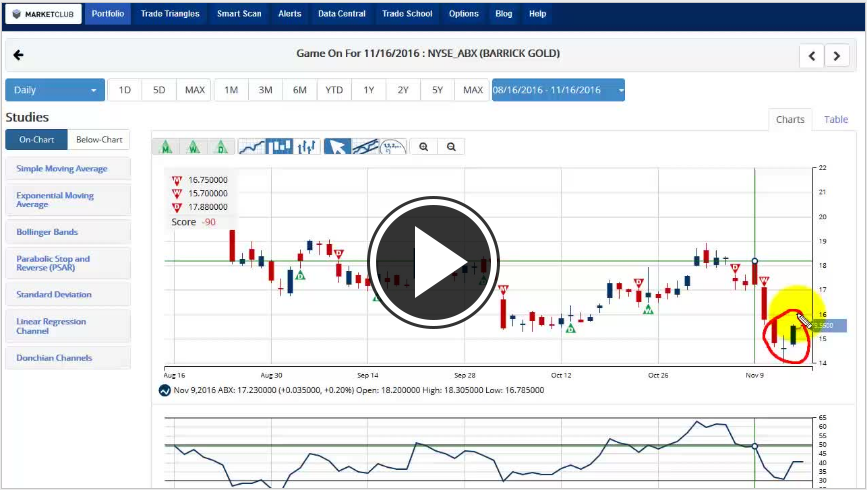Hello MarketClub members everywhere. According to St. Louis Fed Pres. Bullard (voter) December seems to be a "reasonable time" to raise interest rates. My guess is that the Fed will do zero and hope to hold off raising interest rates until 2017. The reason I say that is that it would more than likely hurt the Christmas shopping season and that is something the Fed is loath to do.
Now let me say this, I'm not a fan of the Fed and I think they've handled things very poorly and have done nothing to spur or help the economy. I do however believe that when interest begin to move higher, it will be an incentive for people to go out and begin buying things and looking at real estate again before rates get out of their price range. In other words, I think it will have the opposite effect of not dulling the economy, but spurring the economy to greater productivity. Continue reading "Did This Formation Just Indicate That A Fed Rate Hike Is Ahead"




 broad brush. Candlesticks draw on the same open-high-low-close data as do bars. Here the length of the bar, or “candle,” is determined by the high and low, but the area between the open and close is considered the most important.This area, the “body” of the candle, is filled with blue (or white for most charting programs) for closes higher than open, and is filled with red (or black from most charting programs) for down days. The wicks above and below constitute the “shadow” of the candle, or high or low.
broad brush. Candlesticks draw on the same open-high-low-close data as do bars. Here the length of the bar, or “candle,” is determined by the high and low, but the area between the open and close is considered the most important.This area, the “body” of the candle, is filled with blue (or white for most charting programs) for closes higher than open, and is filled with red (or black from most charting programs) for down days. The wicks above and below constitute the “shadow” of the candle, or high or low.